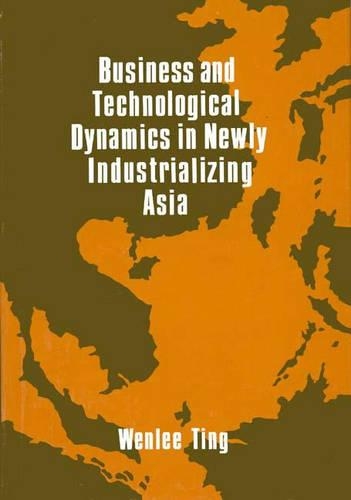
Business and Technological Dynamics in Newly Industrializing Asia
(Hardback)
Publishing Details
Business and Technological Dynamics in Newly Industrializing Asia
By (Author) Wenlee Ting
Bloomsbury Publishing PLC
Praeger Publishers Inc
20th March 1985
United States
Classifications
Tertiary Education
Non Fiction
338.095
Physical Properties
Hardback
199
Reviews
The author's treatment of [the emergence of NICs (newly industrialized countries), namely Taiwan, South Korea, Singapore, and Hong Kong] is in line with the current thinking (by the World Bank and others) that EOI (export oriented industrialization) as opposed to ISI (import substitution industrialization) was the key to success in these countries. The book does not provide a discussion of the opposing view, althought a fresh approach is provided through an examination of the cultural elements contributing to economic growth. The book has six chapters, including one on country perspectives. Discussions of technology, marketing, management development, and NIC multinationals are also provided. The book should be of interest to those who wish to study the growth of NICs from the perspectives of EOI and cultural and managerial environments.-Choice
"The author's treatment of the emergence of NICs (newly industrialized countries), namely Taiwan, South Korea, Singapore, and Hong Kong is in line with the current thinking (by the World Bank and others) that EOI (export oriented industrialization) as opposed to ISI (import substitution industrialization) was the key to success in these countries. The book does not provide a discussion of the opposing view, althought a fresh approach is provided through an examination of the cultural elements contributing to economic growth. The book has six chapters, including one on country perspectives. Discussions of technology, marketing, management development, and NIC multinationals are also provided. The book should be of interest to those who wish to study the growth of NICs from the perspectives of EOI and cultural and managerial environments."-Choice
"The author's treatment of [the emergence of NICs (newly industrialized countries), namely Taiwan, South Korea, Singapore, and Hong Kong] is in line with the current thinking (by the World Bank and others) that EOI (export oriented industrialization) as opposed to ISI (import substitution industrialization) was the key to success in these countries. The book does not provide a discussion of the opposing view, althought a fresh approach is provided through an examination of the cultural elements contributing to economic growth. The book has six chapters, including one on country perspectives. Discussions of technology, marketing, management development, and NIC multinationals are also provided. The book should be of interest to those who wish to study the growth of NICs from the perspectives of EOI and cultural and managerial environments."-Choice
Author Bio
ng /f Wenlee
